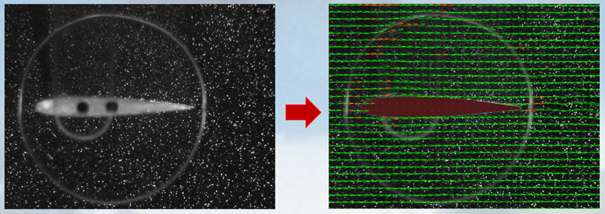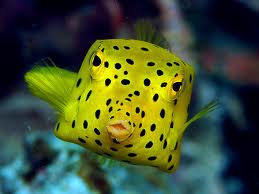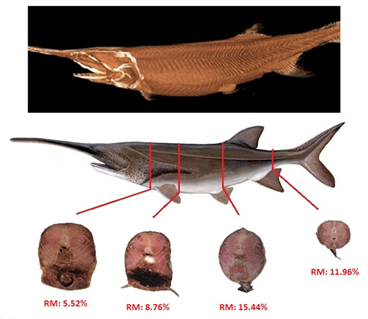Research theme III
Fluid Mechanics and Energetics of Locomotion and Feeding of Marine Animals
Physical interactions between marine animals and the media water, the substrate and air determine to a large extent the energetics of locomotion, acquisition of food and even reproduction. One way to quantify the energetic consequences of common behaviours of marine animals is to map the flow phenomena they generate in a laboratory environment. These flow phenomena, e.g. locomotion, feeding currents or filtration flows, are used as indicators for the mechanical energy involved in these activities. In this way, the main items of the energy budget of the key species can be determined, knowing that in most pelagic animals the biggest time share is spent to feeding and locomotion. Furthermore, the flow in natural boundary layers is studied with the use of physical models to quantify the physical and energetic stresses involved in living and feeding in the marine environment.
- Scaling
- Flow mapping
- Research conducted within this theme
- Methods & equipment
- Results obtained
Scaling
The size of an animal in relation to its physical environment appears to be of key importance to energy expenditure. Small animals experience the marine realm as a viscous soup in which motion and effect are directly linked and where water displacement is expensive. Larger animals experience a less viscous world and apply water handling techniques for their behaviour involving mainly inertial mechanics. When you’re big, active or passive streamlining of the body may be of great advantage. In the real world, most marine animals live or function in a transitional flow regime, in which viscosity as well as inertia have their share in energy expenditure. It is also in this region that most trophic interactions occur, often asking for special feeding structures and strategies in the predator, and special locomotory and escape structures and strategies in the potential prey. The process of finding food, prior to acquisition and ingestion, also strongly depends on the fluid mechanical regime. In a viscosity-dominated environment, diffusion is the main process of odour spreading and in the inertia-dominated environment it is mainly flow. In our group, we try to unravel the physical processes and identify key parameters of all aspects of physical interactions between animal, food and environment, using state of the art flow mapping and motion analysis techniques. The results provide insight in the relative roles of viscosity and inertia, mechanics and size and in the energetics of common behaviour, to increase our understanding of the typical characteristics of marine animal life. Also life history effects are studied, indicating a seriously different swimming environment for a larva compared to an adult.
Flow mapping
One of our main techniques to map fluid flow direction and magnitude instantaneously is Digital Particle Image Velocimetry (DPIV). The flow, or the space around an organism or object in a fluid, is illuminated with a bright laser sheet, so that particles in the fluid light up like a starry night. The illuminated sheet is imaged using a high-speed video camera and by analysing the particle pattern displacements in subsequent images an accurate vector diagram of the flow can be produced. Such a diagram can be used to derive additional parameters, e.g. linked to energetics.


Research conducted within this theme
Recent work focuses on animals from several trophic groups and sizes: swimming fish (larvae and adults, round-, flat- and reef-fish), e.g. a study of swimming in over 25 species of boxfish looking at the links between swimming performance and natural habitat and niche, or the swimming style of the ram-filter-feeding Paddlefish that needs high propulson to overcome the drag af its huge filter system. The clearly distinguishable swimming styles ‘undulatory’ vs. ‘drag-based pectoral fin’ vs. ‘lift-based pectoral fin’ vs. ‘oscillatory median fins’ also gets special attention. Next to fish we also work on Lobster and/or Crayfish with respect to their interaction with the surrounding water while walking and accelerating (swimmerets) or escaping (tail-flip). Descriptive parameters used are animal velocity and acceleration, water velocity and accelerations, vorticity and shear levels, time-dependent processes such as shedding of masses of water or shedding of vorticity, momentum fluxes and instantaneous propulsive forces, vortex energy, viscous dissipation rates, animal displacement, animal posture, filtered volumes, leakiness, mechanical energy, muscle energetics and metabolic energy.

Methods & equipment
Both the organisms or structures involved and the flows that are resulting from it are studied using:
- High-Speed Video (B/W & full colour, up to 10k fps)
- Stereoscopic video (up to 100 fps)
- Flow tanks (up to 0.4 x 0.4 x 1.2 m measure section, max speed 3 m/s)
- Race track tank (6 x 4 m, canal width 0,7 m)
- Wind tunnels (up to 1.4 x 1.4 x 1.5 m measure section, max speed 50 m/s in smaller section)
- Climate rooms
- Aquarium room with large holding tanks, octagonal tank (3 m Ø)
- Digital Particle Image Velocimetry applying Lasers up to 45 W CW
- 3D prototyping techniques (DLP) for making models
- 2D force measurement system with resp. 5N and 50 N full scale in with 16 bits readout
Results obtained
Results vary with the specific problem studied. Direct experimental results comprise speed, efficiency and endurance of locomotory activities, efficiency of various feeding modes and for various Reynolds’ number scales, filter feeding capacity and efficiency, food intake characteristics, interaction with disturbance of flow systems, detection of food or tracking of chemical cues, such as DMS produced by certain phytoplankton species.
These results are used to derive general governing principles with regard to marine animal ecology and to map energy expenditure in food chain compartiments and energy flows in marine food chains.
For more information on this theme, please contact Eize Stamhuis.
| Last modified: | 07 November 2019 11.57 a.m. |
